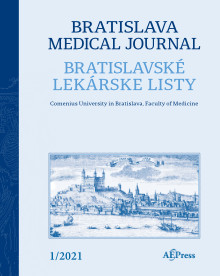Journal info
|
||||
Select Journal
Journals
Bratislava Medical Journal 2024 2023 2022 2021 2020 2019 2018 2017 2016 2015 2014 2013 2012 Ekologia - Ecology Endocrine Regulations General Physiology and Biophysics Neoplasma Acta Virologica Studia Psychologica Cardiology Letters Psychológia a patopsych. dieťaťa Kovove Materialy-Metallic Materials Slovenská hudba 2025Webshop Cart
Your Cart is currently empty.
Info: Your browser does not accept cookies. To put products into your cart and purchase them you need to enable cookies.
Bratislava Medical Journal Vol.114, No.11, p.621-624, 2013 |
||
| Title: TNF-α, IL-1β, and oxidative stress during fracture healing with or without ankaferd | ||
| Author: R. Amanvermez, M. Gunay, A. Piskin, G. Keles, L. Tomak | ||
| Abstract: Whether ankaferd blood stopper (ABS) has a negative or positive effect on bone union during fracture healing is unknown. The purpose of this study was to evaluate the serum changes of oxidative stress markers, Tumor Necrosis Factor-α (TNF-α), Interleukin-1β (IL-1β), and Interleukin-10 (IL-10) during fracture healing process with or without ABS application to bone fracture. Material and methods: Eight rats were used as a control group (1) that was not subject to fracture. The remaining 48 rats were divided into six groups, 8 rats in each. The femoral shaft fracture was produced by cutting with bone-scissors. One ml of ABS was applied on the fracture region in groups 3 (7th day), 5 (21st day), and 7 (45th day) or saline instead of ABS on the fracture regions in groups 2 (7th day), 4 (21st day), and 6 (45th day). Radiographs and above parameters were examined on post-fracture days 7, 21, and 45. Results: Malondialdehyde and protein carbonyls were measured in high levels in the groups 2 and 4 with respect to control. Their levels did not change statistically in the experimental groups after ABS application. The values of TNF-α and IL-1β were elevated on 7th post-fracture day according to control, but were lower (by 11.86 % and 44.48 %) in the group 3 treated with ABS comparing to group 2. Radiographic examination indicated a low callus formation on fracture union in the femoral fractures of groups 3 and 5 treated with ABS. Conclusion: The present findings may suggest that ABS application seems to be ineffective on fracture union in early fracture healing period, except for bleeding control (Tab. 2, Fig. 3, Ref. 26). |
||
| Keywords: ankaferd, fracture healing, TNF-α, IL-1β, oxidative stress. | ||
| Year: 2013, Volume: 114, Issue: 11 | Page From: 621, Page To: 624 | |
| doi:10.4149/BLL_2013_132 |
||
|
|
 download file download file |
|

